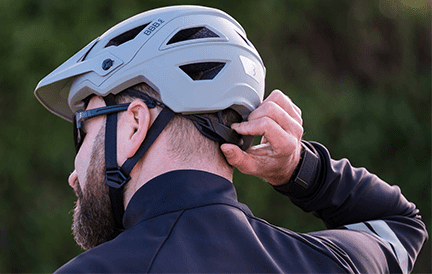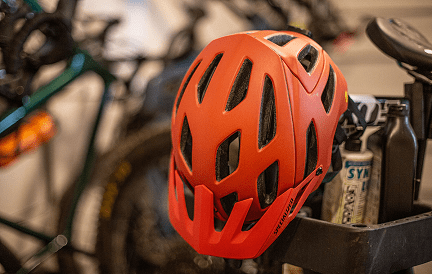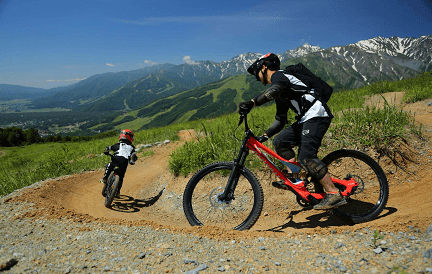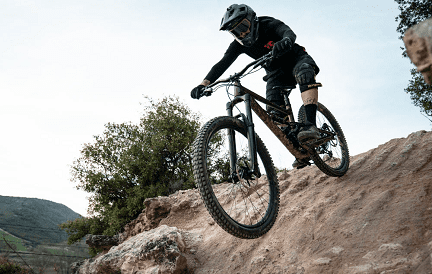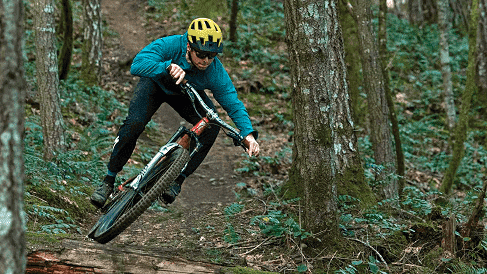In this post, you’ll find all you need to know about purchasing, marketing, and different models. And we compare the pros and cons of all mountain bike helmets with a comparison of different manufacturers. We also make an analysis of the mtb helmets currently offered on the market. And it is with an emphasis on the purchase of cycling full face helmet.
- Part 1: Robust Full-face Helmets with Visor for Downhill and Enduro
- Part 2: What Should I Pay Attention to When Buying a Full-face Helmet
- Part 3: When Should I Replace My Full-face Helmet
Part 1: Robust Full-face Helmets with Visor for Downhill and Enduro
Jumps, speed, and lots of adrenaline: you need a helmet that offers maximum protection if you love downhill. In the Downhill (DH), Freeride (FR), and Enduro (EN) disciplines, special full-face helmets guarantee total head coverage. You find full-face and downhill helmets in all sizes, colours, and price ranges in our online shop. Downhill helmets from famous brands such as Troy Lee Designs, O’NEAL, FOX, and Bell are available.
The Full-face Helmet Is Specifically for Cyclists
Thanks to their integrated chin guard, the cycling full-face helmets offer adequate protection for the entire head and face. A fixed chin guard with integrated cheek pads offers additional protection in the event of an accident. A full-face helmet is heavier than a standard MTB helmet. But it provides better security. You can save weight on the helmet by opting for a full carbon helmet. Unlike full-face helmets used in motorcycling and motocross, full-face helmets for MTB offer better ventilation. They are certified for downhill and enduro mountain biking.
Removable Chin Guard for Enduro
Our hybrid full-face helmets include removable chin guards. During the climb, the chin guard may be removed from the helmet and packed. It enables you to share your maximum even while going uphill while providing maximum ventilation. To guarantee utmost safety, you may attach the chin guard when it’s time to descend. Enduro full-face hybrid helmets with detachable chin guards are an excellent choice for riders who want the best of both worlds.
Part 2: What Should I Pay Attention to When Buying a Full-face Helmet
A full-face helmet or downhill helmet should fit tightly without being too tight or, conversely, free to move. The size depends on the circumference of the head. A removable and washable liner is a good prerequisite for the long life and comfort of the helmet. Another essential feature is the predisposition for the mask: some helmets have guides along the back of the outer shell to keep the mask in place. A double D closure under the chin ensures a secure grip of the helmet and a quick opening when you want to take off the helmet.
MIPS – Technology Against Rotational Forces
Some of our full-face helmets use the MIPS (Multi-Directional Impact Protection Technology) system. It describes a slip system inside the helmet. It rotates within the helmet to reduce rotational stresses, especially during side hits. This technology is indicated on full-face helmets.
Quick First Aid Thanks to the Removable Cheek Pads
Our range includes “hybrid” full-face MTB helmets with detachable chin guards. During the ascent, it is possible to remove the chin guard from the helmet and store it in the backpack. It gives you maximum ventilation. And it allows you to share your maximum even uphill. When it’s time to enjoy the descent, you can quickly attach the chin guard and thus ensure maximum protection. With their removable chin guards, these full-face hybrid helmets for enduro offer a practical combination for versatile riding.
Part 3: When Should I Replace My Full-face Helmet
A bump could seriously damage the bicycle helmet. Be careful because not all damage is visible to the naked eye. The helmet’s ability to absorb energy is hampered by cracks in the material and internal foam. And it compromises your safety. That is why it is necessary to replace the full-face helmet after a fall. Even if your helmet hasn’t been in an accident. It should be replaced. UV rays, humidity, sweat and other external factors degrade the helmet’s functionality over time. So we recommend buying a new helmet regularly. It’s about your head.
CE and US Standard – MTB Helmet Protection
The CE DIN EN1078 standard is mandatory for all cycling helmets sold in the European Union and Switzerland. It is the minimum requirement for all MTB helmets. In addition, in the United States, there are ASTM F1952-15 or ASTM F2032-15 standard tests for helmets used in downhill and BMX, which require a higher safety standard. The American standard requires full-face protection. This examination also includes the chin guard, closing mechanism, and shell. Your full-face helmet should, in any case, be certified according to DIN EN1078. But, ideally, also it meets the strictest US testing standards.
For downhill and enduro lovers: never do it without wearing a full-face helmet! Discover our range of bike helmets to use on your mountain bike! Our experts will be happy to assist you. They can select a full-face helmet suitable for the intended use. Our product range includes a vast selection of full-face helmets in your price range, size, and colour. They are from famous brands like BELL, Troy Lee Designs, FOX, O’NEAL, UVEX and more. Discover our best offers!
Different Types of Full Face Helmets
An off-road rider will wear a different type of full-face helmet that does not have an integrated visor. Most off-road riders wear goggles similar to ski goggles. So the front of the helmet will have an open-air design. However, it is still a full-face helmet that features a device. It extends around the jaw and in front of the chin. It will prevent direct impact with solid objects. These helmets are typically lighter than full-face road helmets. And they allow for better ventilation and airflow.
Cyclists can also use a full-face helmet similar to the off-road motorcyclist. However, unlike motorcycle helmets, bicycle helmets don’t have to fulfil the DOT requirements for certification. There are separate crash tests for bicycle helmets. But since most bicycles do not reach the speed of motorcycles, the requirements are different. Do not wear a bicycle helmet while riding. You can wear a motorcycle helmet while you’re cycling. But a cyclist might prefer a bicycle helmet because it is lighter.


